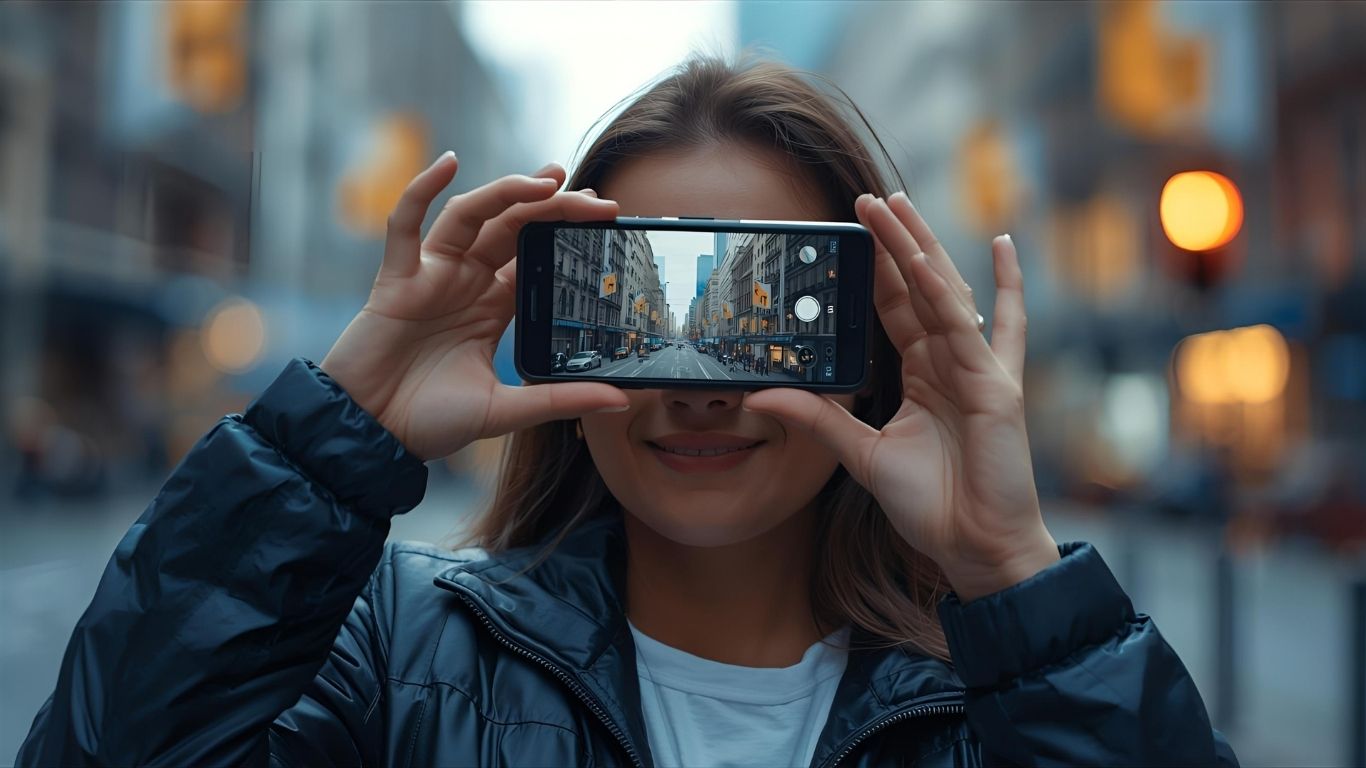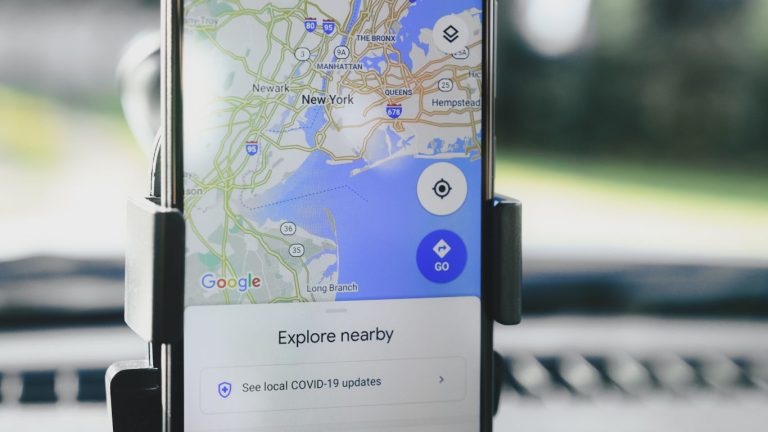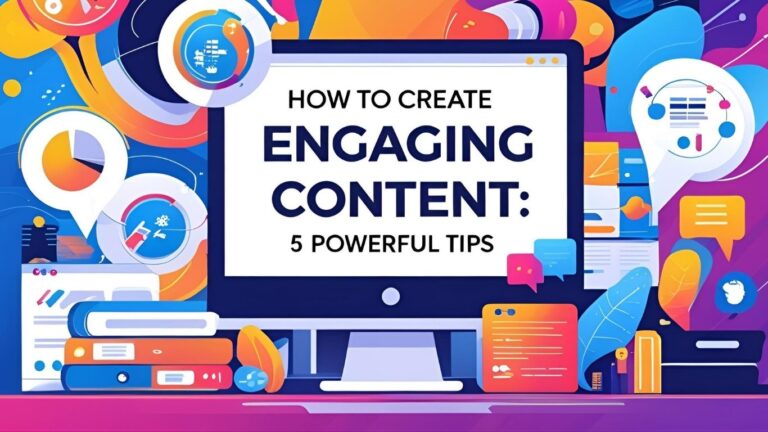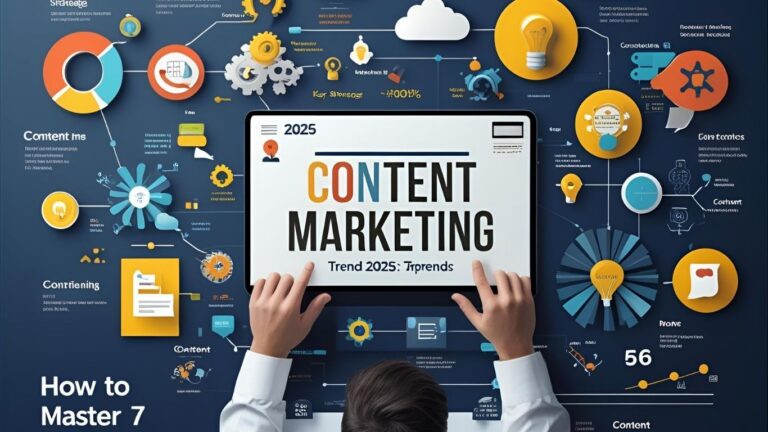How Augmented Reality Transforms Digital Marketing: 5 Powerful Strategies #AugmentedReality #DigitalMarketing #ARStrategies
Augmented Reality in Digital Marketing: 5 Powerful Strategies to Boost Your Campaigns
In a world where digital marketing continues to evolve at lightning speed, augmented reality (AR) is one of the most revolutionary tools that has emerged. You’ve probably encountered AR in social media filters or tried on virtual glasses online, but its potential for marketers is far more expansive. Augmented Reality in Digital Marketing can fundamentally change the way brands interact with consumers, transforming passive experiences into immersive, engaging ones. This article will take you through five powerful strategies that will help you leverage AR to boost your marketing campaigns and elevate your brand.
Introduction to Augmented Reality in Marketing
When you hear the term Augmented Reality in Digital Marketing, it may bring to mind the cutting-edge effects seen in gaming or sci-fi films. But what exactly is AR, and why is it crucial for your marketing strategy today? AR overlays digital elements onto the real world, giving consumers an interactive and often immersive experience. From virtual product try-ons to interactive ads, the possibilities are endless.
The power of AR lies in its ability to engage customers at a personal level, often blurring the line between the physical and digital worlds. This is where Augmented Reality in Digital Marketing comes into play. As businesses strive to capture attention in an increasingly crowded digital space, AR offers a new way to stand out, create deeper connections with consumers, and improve overall brand perception.
The Power of Immersive Experiences in Digital Marketing
If you’ve ever used a filter on Instagram or used a furniture app that lets you place virtual chairs in your living room, you’ve experienced the magic of AR firsthand. The ability to see something in your own environment without actually having it physically there is powerful. This is what makes Augmented Reality in Digital Marketing a game-changer—it’s all about offering customers a sense of presence and immersion that traditional marketing methods can’t.
Creating Memorable Interactions
AR allows customers to interact with your brand in ways that traditional ads simply cannot. For example, Augmented Reality in Digital Marketing can allow users to try on clothes virtually, see how makeup looks on their face before purchasing, or test out products from the comfort of their homes. This personalized engagement not only captures attention but also fosters a deeper emotional connection with your brand.
Consider the power of virtual try-ons for a moment. Brands like L’Oreal and Sephora have embraced AR to allow customers to visualize how beauty products look on their skin tone or how a particular shade of lipstick will appear. With the right AR experience, the consumer can almost feel like they’re physically in the store, engaging with your brand.
How AR Boosts Consumer Engagement in Digital Campaigns
Augmented Reality in Digital Marketing is rapidly gaining traction because it offers an unparalleled level of interaction. Traditional marketing channels such as TV ads or banner ads often fail to capture attention or prompt engagement. With AR, however, consumers become active participants, not passive observers.
Interactive Ads: A New Frontier for Engagement
Imagine walking past a bus stop, and instead of a static ad, you see a digital creature pop out of the ad, inviting you to interact with it. This is the future that Augmented Reality in Digital Marketing is heading toward. It turns passive media into something highly interactive, encouraging users to engage and play.
By integrating AR into your campaigns, you can enhance the interactivity of your advertisements. Users can engage with products in a dynamic way that goes beyond clicking a link or watching a video. They can physically interact with your brand’s digital persona, leading to longer engagement times and more memorable experiences.
Engagement Metrics and Impact
The effectiveness of AR is not just a feel-good statement—it’s measurable. Brands that implement Augmented Reality in Digital Marketing see a significant increase in engagement metrics like time spent interacting with ads, higher conversion rates, and ultimately, a more loyal customer base. Unlike traditional ads, AR provides a rich, data-driven experience that you can analyze and refine.
Augmented Reality in Retail Marketing: A Game-Changer
AR isn’t just about flashy tech or fun experiences—it can have a real, tangible impact on your bottom line, especially in retail. Consider how Augmented Reality in Digital Marketing helps your customers make purchase decisions. Virtual try-ons in fashion, furniture, or makeup have transformed the way people shop.
Virtual Try-Ons: Bridging the Gap Between Online and In-Store Shopping
The experience of trying something on in a store is a core part of the shopping journey. However, online shopping doesn’t have that tactile experience. Augmented Reality in Digital Marketing changes this by allowing consumers to “try before they buy” virtually. From trying on clothes or glasses to seeing how a piece of furniture fits in their living room, AR is bridging the gap between online shopping and in-store experiences.
By offering virtual try-ons through AR, brands can reduce return rates and increase customer satisfaction, ultimately boosting conversion rates. Imagine the possibility of a customer adding an item to their cart because they could see how it looked or felt in their own space, all from the comfort of their home.
5 Ways to Integrate AR into Your Marketing Strategy
Now that we’ve explored the transformative potential of Augmented Reality in Digital Marketing, let’s dive into actionable strategies to make AR a part of your marketing toolkit. Here are five ways you can implement AR to enhance your campaigns:
1. Product Visualization with AR
Augmented Reality in Digital Marketing allows customers to visualize products in a 3D space before making a purchase. For instance, IKEA’s app lets users place furniture in their homes virtually, which helps them visualize how pieces fit within their spaces. This type of AR experience reduces uncertainty and empowers customers to make better purchasing decisions.
2. Interactive Ads with AR
Transform your standard digital ads into interactive experiences. AR allows consumers to engage with your product through an ad, whether it’s through a 3D preview or an interactive video. The more engaging the ad, the more likely consumers are to share it on social media, giving your brand even more exposure.
3. Creating Gamified Experiences with AR
Gamification is a highly effective strategy for engaging consumers, and Augmented Reality in Digital Marketing takes this to the next level. AR can turn a simple marketing campaign into an interactive game, encouraging users to participate, unlock rewards, and share their experiences. Consider the success of Pokémon Go—AR games can attract large audiences and generate viral buzz.
4. Virtual Try-Ons for Retail and Fashion
We’ve already discussed virtual try-ons for retail, but its impact can’t be overstated. Brands like Warby Parker have made it easier for customers to “try on” glasses through their mobile apps, enhancing the shopping experience while reducing purchase hesitation. This not only boosts conversions but also elevates the customer experience.
5. Enhancing Event Experiences with AR
Imagine attending a live event or exhibition where you can use your phone to access additional content via AR. This could range from viewing behind-the-scenes footage to engaging with interactive displays. Augmented Reality in Digital Marketing can add a layer of depth to events and create a more engaging atmosphere for attendees.
How AR Enhances User Experience and Retention
AR’s immersive nature makes it perfect for creating experiences that consumers not only enjoy but remember. The key to retaining customers in today’s fast-paced world is providing them with experiences that are memorable and valuable. Augmented Reality in Digital Marketing can play a pivotal role in this.
Personalization: AR That Speaks to Your Customer
One of the best ways to keep customers coming back is by offering them personalized experiences. AR provides an ideal platform for this. Whether it’s showing how a product looks in a person’s home or allowing them to interact with a digital version of themselves, AR can make customers feel like they are getting something unique to them.
Data-Driven Insights: Improving Customer Retention
The beauty of Augmented Reality in Digital Marketing is that it gives you a wealth of data to track and analyze. You can learn a lot about customer preferences, behavior, and pain points by monitoring how they engage with your AR content. This data can then be used to refine your strategy and improve future AR campaigns.
Case Studies: Success Stories in AR Marketing
Understanding how other brands have effectively used Augmented Reality in Digital Marketing can provide valuable insights into what works and what doesn’t. Here are a couple of real-world examples of brands that have successfully embraced AR.
1. IKEA: Revolutionizing Furniture Shopping with AR
IKEA’s AR app, IKEA Place, allows customers to see how furniture fits into their living spaces before buying it. This seamless integration of AR into their marketing strategy has led to a reduction in returns and an increase in customer satisfaction.
2. Nike: Virtual Shoe Try-On
Nike has embraced AR for virtual shoe try-ons, allowing customers to see how different pairs of shoes will look on their feet through their mobile app. This innovative approach has enhanced customer experience and driven sales growth.
The Future of AR in Digital Marketing
So, what does the future hold for Augmented Reality in Digital Marketing? With advancements in AR technology, we can expect more personalized, immersive, and interactive experiences for consumers. As AR becomes more integrated with artificial intelligence and machine learning, the ability to customize and adapt experiences to individual users will become even more powerful.
AI and AR: A Powerful Combination
The convergence of AI and AR will lead to even more personalized experiences. Imagine AR ads that change based on the user’s preferences, location, or behavior. This level of personalization will allow brands to offer content that is more relevant and impactful, further boosting engagement and conversion.
Conclusion: Why You Should Embrace AR in Your Marketing Strategy Today
Incorporating Augmented Reality in Digital Marketing is not just a trend—it’s an investment in the future of your brand. By embracing AR now, you can stay ahead of the competition, engage with your audience in new ways, and create unforgettable experiences. Whether it’s through virtual product try-ons, interactive ads, or gamified experiences, the possibilities are limitless.
Augmented Reality in Digital Marketing is the key to creating deeper, more meaningful connections with your audience. The time to start using AR in your campaigns is now—don’t wait until your competitors are already ahead of the curve. Embrace the future, and watch your brand soar.
Bullet-Point Summary
- Augmented Reality (AR) is transforming digital marketing by offering immersive, interactive experiences.
- AR in digital marketing allows brands to engage consumers in more personalized ways.
- Product visualization is one of AR’s most powerful applications, helping consumers see products in their own environment before buying.
- AR-driven interactive ads are changing the way users engage with campaigns, boosting time spent on ads and increasing conversions.
- Virtual try-ons in fashion, makeup, and retail are revolutionizing e-commerce by reducing return rates and increasing customer confidence.
- AR creates gamified experiences, increasing user interaction and engagement with brands.
- IKEA and Nike are two brands that have successfully implemented AR in their marketing strategies.
- AR is measurable, with key metrics showing increased engagement, higher retention, and greater customer satisfaction.
- Data analytics from AR campaigns can provide valuable insights into consumer preferences and behavior.
- The combination of AI and AR will create even more personalized, adaptive experiences for users in the future.
- AR offers a competitive edge, allowing brands to differentiate themselves in a crowded digital marketplace.
- The future of AR in digital marketing promises more immersive, personalized experiences, further integrating with AI and machine learning.
- AR in digital marketing leads to longer customer interactions, deeper brand loyalty, and improved conversion rates.
- The rise of AR in marketing is giving consumers memorable, emotional connections with brands.
- Implementing AR in your marketing campaigns today will help your brand stay ahead of industry trends.
Unique FAQs with Answers
1. What is Augmented Reality (AR) in Digital Marketing?
Answer: Augmented Reality (AR) in digital marketing overlays digital content, such as 3D models, animations, or interactive elements, onto the real-world environment. It allows consumers to engage with products and ads in a more immersive and personalized way, improving their shopping or brand experience.
2. How does AR improve customer engagement in marketing campaigns?
Answer: AR makes marketing campaigns more interactive and engaging. By providing customers with unique, immersive experiences (like virtual try-ons or product visualizations), AR encourages more active participation, leading to longer engagement times, higher interaction rates, and better customer retention.
3. Can AR increase conversion rates?
Answer: Yes, AR can significantly boost conversion rates. By offering virtual product try-ons or previews, customers gain more confidence in their purchasing decisions, which reduces hesitation and leads to higher conversion rates. Additionally, AR experiences are memorable, creating lasting impressions that encourage future purchases.
4. What industries can benefit from AR in marketing?
Answer: Several industries benefit from AR, including retail, fashion, beauty, real estate, automotive, and entertainment. For example, fashion brands use AR for virtual try-ons, while real estate agencies offer virtual property tours. AR helps businesses across various sectors engage customers more effectively.
5. How does AR enhance the shopping experience?
Answer: AR enhances the shopping experience by enabling customers to visualize products in their real-world environment. Whether it’s seeing how furniture fits in a room or trying on clothes virtually, AR helps customers make more informed and confident purchase decisions, leading to a better overall shopping experience.
6. How do I incorporate AR into my marketing campaigns?
Answer: To incorporate AR into your campaigns, start by selecting AR tools or platforms suited to your needs. You can implement AR for virtual try-ons, interactive ads, or product visualizations. Ensure the experience is seamless and user-friendly to maximize engagement and impact.
7. Is AR difficult to implement in digital marketing campaigns?
Answer: Not necessarily. With modern AR tools and platforms, such as ARKit and Spark AR, integrating AR into your campaigns is more accessible than ever. Many platforms offer easy-to-use templates and customizable features, making it easy for businesses of all sizes to implement AR.
8. What are the benefits of AR for e-commerce?
Answer: AR benefits e-commerce by reducing product returns, increasing customer satisfaction, and enhancing the online shopping experience. Customers can virtually try on products or see how items fit in their space, making them more confident in their purchases and less likely to return items.
9. How can AR drive brand awareness?
Answer: AR drives brand awareness by creating memorable, shareable experiences. Interactive AR ads or campaigns encourage users to share their experiences on social media, expanding your brand’s reach. When people engage with AR content, it sparks curiosity and generates word-of-mouth marketing.
10. How does AR help in building customer loyalty?
Answer: By offering immersive and personalized experiences, AR builds stronger emotional connections with customers. When customers feel more connected to a brand, they’re more likely to return for repeat purchases, recommend the brand to others, and engage with future campaigns.
11. What are the top benefits of AR in marketing?
Answer: The top benefits of AR in marketing include increased customer engagement, better product visualization, higher conversion rates, memorable brand experiences, and improved customer satisfaction. It helps brands stand out and provides customers with a more immersive and personalized experience.
12. Can AR in digital marketing provide measurable results?
Answer: Yes, AR campaigns offer measurable results through data analytics. Brands can track key metrics such as user engagement, interaction time, conversion rates, and ROI, helping to assess the success of their AR campaigns and refine strategies for future growth.
13. What is the future of AR in digital marketing?
Answer: The future of AR in digital marketing is incredibly promising, with technologies like AI and machine learning enhancing AR experiences. Brands will create even more personalized, interactive, and dynamic experiences for users, pushing the boundaries of what is possible in marketing.
14. How can I use AR for social media marketing?
Answer: On social media, AR can be used to create filters, interactive ads, and branded experiences. Platforms like Instagram and Snapchat allow brands to develop AR lenses or filters that engage users and encourage them to share the experience, boosting brand awareness and engagement.
15. Is AR expensive to implement?
Answer: The cost of implementing AR in digital marketing depends on the complexity of the experience. Basic AR features, such as simple product visualizations or filters, can be affordable, while more advanced, immersive AR campaigns may require a larger budget. However, the potential return on investment can make it worthwhile.
Explore These Valuable Resources
To further enhance your understanding of Augmented Reality in Digital Marketing and expand your knowledge in this rapidly evolving field, we’ve curated a list of external links that provide valuable insights, tips, and case studies.
Augmented Reality in Marketing: The Ultimate Guide
Explore the transformative impact of AR in marketing and how companies are using it to engage customers more deeply. This comprehensive guide breaks down strategies for incorporating AR into campaigns.
The Future of Augmented Reality in Marketing
Stay ahead of the curve with this article by Forbes, which discusses the future of AR in marketing and its potential to revolutionize customer interactions and experiences.
AR Marketing Examples and Case Studies
Dive into real-world AR marketing examples and learn from successful campaigns. This article from Shopify highlights how brands have used AR to enhance customer experience and drive sales.
How Augmented Reality is Transforming E-Commerce
This Digital Trends article covers how AR is changing the e-commerce landscape, enabling virtual product try-ons, immersive shopping experiences, and increasing conversions for online retailers.
Why Augmented Reality Will Change Marketing Forever
CNBC provides a forward-looking analysis on how AR will reshape marketing strategies, highlighting the rise of AR-driven ads, interactive campaigns, and consumer engagement.
The Role of AR in Consumer Engagement
Learn how AR is boosting consumer engagement in this article by AdAge, showcasing the power of interactive experiences that encourage deeper connections between brands and customers.
The Business Value of Augmented Reality
Gartner’s forecast on AR spending offers a deep dive into how businesses are investing in AR and its growing value in the digital marketing space. This resource provides a future outlook on AR’s business impact.
AR in Marketing and Advertising: Best Practices
MarketingProfs shares the best practices for integrating AR into marketing and advertising. This resource helps marketers understand the fundamentals of creating effective AR campaigns.
Understanding AR in Marketing Through the Lens of Google
Google’s official blog post discusses how the tech giant uses AR for shopping and how it’s reshaping consumer experiences. Discover how AR-powered search can help brands enhance product discovery.
Top AR Tools for Marketing
This article from Creative Bloq provides a curated list of the top AR tools for designers and marketers, perfect for businesses looking to integrate AR into their marketing efforts.
How AR Helps Businesses Achieve Better Customer Experiences
Entrepreneur’s article covers how businesses can leverage AR to improve customer experiences, enhance engagement, and deliver memorable, interactive experiences to their target audience.
The Impact of Augmented Reality on Retail
Retail Dive explores how AR is transforming the retail landscape, offering businesses innovative ways to engage with customers and boost sales through immersive experiences.
These links provide an excellent foundation to dive deeper into the world of Augmented Reality in Digital Marketing. By exploring these resources, you’ll gain a broader understanding of AR’s potential, best practices, and industry applications that can help elevate your marketing strategy. Happy learning!
Blog Recommendation
If you want to dive deeper into digital marketing strategies and innovations, check out Rizwan’s blog for insightful articles and expert tips on how to grow your brand in the digital age.
Services
Looking to incorporate Augmented Reality in Digital Marketing? Explore our services and let us help you build innovative campaigns that boost engagement and drive conversions.
Portfolio
Want to see our work in action? Check out our portfolio to see how we’ve helped brands harness the power of AR and other cutting-edge technologies to achieve their marketing goals.
Shop
Discover a wide range of digital marketing tools and products at our online shop. Whether you’re looking for AR solutions or marketing resources, we’ve got you covered.
Stay connected with us for the latest updates, insights, and industry trends. Follow Rizwan on LinkedIn to keep up with all things digital marketing.







